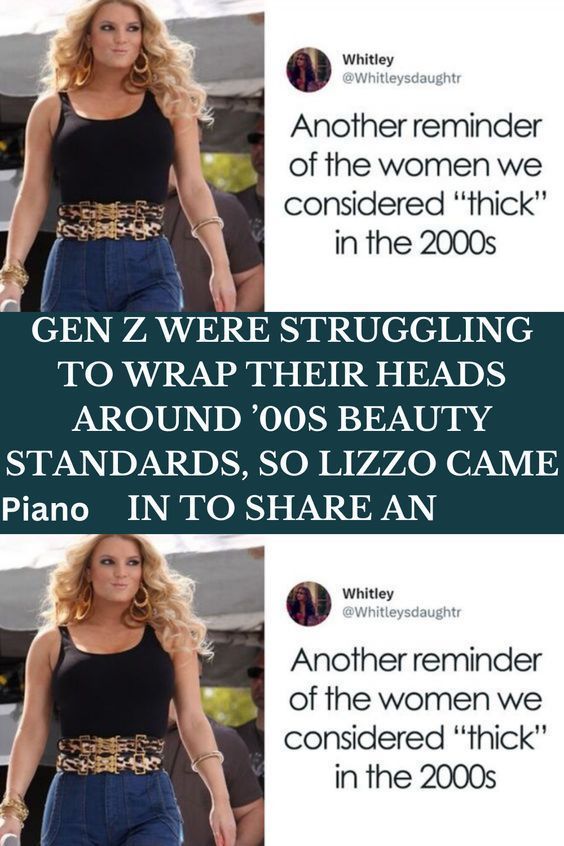Introduction
Gen Z is known for their progressive attitudes and values, and they were certainly taken aback when they learned about the concept of “thick” in the early 2000s. For millennials, the idea of being “thick” was all about celebrating curves and embracing body positivity – something that was not as widely accepted in previous generations. To help Gen Z understand the true meaning of “thick,” millennials took it upon themselves to educate them on this important cultural shift.
What Does “Thick” Mean to Millennials?
To millennials, being “thick” was about more than just physical appearance – it was about confidence, self-love, and embracing one’s natural curves. In a society that often promotes unrealistic beauty standards, millennials sought to redefine what it means to be beautiful. They celebrated bodies of all shapes and sizes, encouraging others to feel confident and comfortable in their own skin.
– Confidence: Millennials believed that being “thick” was a sign of confidence and self-assurance. Instead of hiding their curves or feeling ashamed of their bodies, they flaunted them proudly, sending a powerful message that beauty comes in all forms.
– Self-Love: Embracing one’s natural shape was a form of self-love for millennials. By rejecting societal norms and embracing their unique bodies, they demonstrated that true beauty comes from within and is not defined by the size or shape of one’s body.
– Embracing Curves: Celebrating curves was a central aspect of being “thick” for millennials. They appreciated the beauty of natural curves and rejected the idea that only thin bodies were attractive. By promoting body positivity, they encouraged others to embrace their curves and love themselves just as they are.
Why Was the Concept of “Thick” Misunderstood by Gen Z?
For Gen Z, the idea of being “thick” in the early 2000s may have seemed confusing or even contradictory. In a time when society was still dominated by narrow beauty standards and unrealistic body ideals, the concept of celebrating curves and embracing one’s natural shape was a radical shift. Gen Z may have struggled to understand why being “thick” was considered beautiful by millennials, especially if they had grown up with different cultural norms and expectations.
– Changing Beauty Standards: The concept of “thick” represented a shift away from traditional beauty standards towards a more inclusive and diverse view of beauty. Gen Z may have been accustomed to a different set of beauty ideals, making it challenging for them to grasp the significance of being “thick” in the eyes of millennials.
– Lack of Representation: In the early 2000s, there was a lack of diverse representation in media and popular culture, which may have contributed to Gen Z’s misunderstanding of the concept of being “thick.” Without positive and inclusive role models to look up to, it may have been difficult for them to see the beauty in embracing one’s natural curves.
– Cultural Differences: Generational differences in attitudes towards body image and self-acceptance may have also played a role in why Gen Z struggled to understand the concept of being “thick.” With changing cultural norms and evolving perspectives on beauty, it can be challenging for different generations to see eye to eye on what is considered attractive or desirable.
How Did Millennials Educate Gen Z About Being “Thick”?
As millennials sought to educate Gen Z about the true meaning of being “thick,” they took various approaches to help them understand and appreciate this important cultural shift. By promoting body positivity, celebrating diversity, and encouraging self-love, millennials hoped to bridge the gap between generations and foster a more inclusive and accepting society.
– Social Media Campaigns: Millennials used social media platforms to spread messages of body positivity and self-acceptance, reaching a wide audience and sparking important conversations about what it means to be “thick.” Through hashtags, posts, and campaigns, they highlighted the beauty of all body types and encouraged others to embrace their natural curves.
– Celebrity Role Models: By looking up to celebrity role models who embodied the ideals of being “thick,” millennials were able to showcase the beauty and confidence that comes from embracing one’s natural shape. Celebrities who proudly flaunted their curves served as powerful examples for Gen Z, showing them that beauty comes in all forms.
– Educational Initiatives: Millennials also worked to educate Gen Z through educational initiatives, workshops, and events that promoted body positivity and self-love. By engaging in open dialogue and providing resources for self-acceptance, they helped Gen Z understand the importance of embracing their bodies and celebrating their unique beauty.
Conclusion
The concept of being “thick” in the early 2000s represented a significant cultural shift towards body positivity, self-love, and embracing one’s natural curves. While Gen Z may have initially struggled to understand the significance of being “thick” in the eyes of millennials, they were ultimately able to learn from their predecessors and appreciate the beauty of diversity and inclusivity. By educating Gen Z about the true meaning of being “thick,” millennials helped bridge the gap between generations and foster a more accepting and inclusive society.
You can review our digital products by following us on Etsy.





